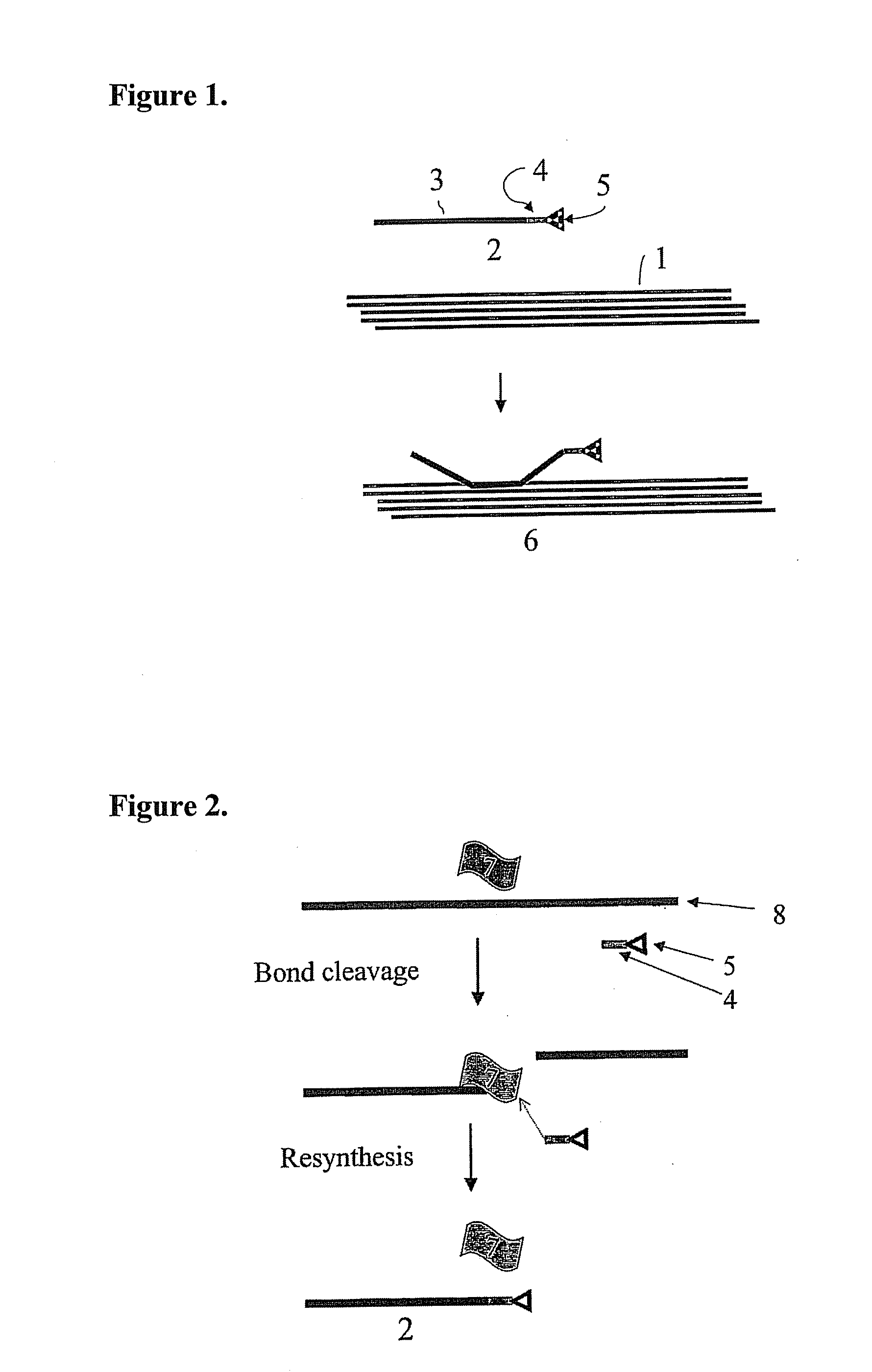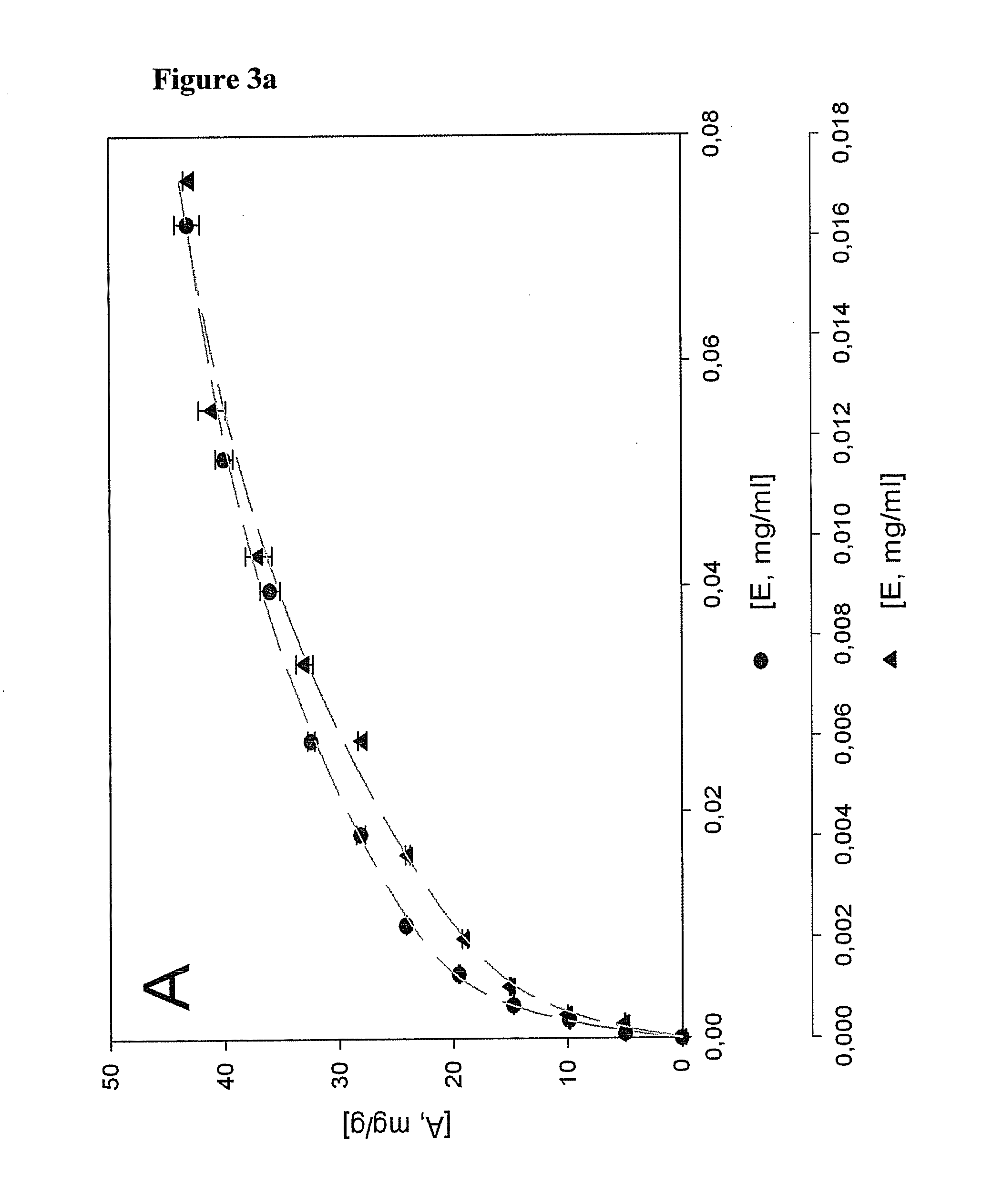Implantable material comprising cellulose and the glycopeptide xyloglucan-grgds
a technology of cellulose and glycopeptide, which is applied in the field of implantable materials, can solve the problems of complex structure changes in the chemical modification of hydrogels such as bacterial cellulose, and achieve the effect of improving biocompatibility to pcm
- Summary
- Abstract
- Description
- Claims
- Application Information
AI Technical Summary
Benefits of technology
Problems solved by technology
Method used
Image
Examples
example 1
[0125]Preparation of Xyloglucan and Xyloglucan-GRGDS (SEQ ID NO: 16)
[0126]A mixture (15:7:32:46) of XXXG, XLXG, XXLG and XLLG xylogluco-oligosaccharides (XGOs) was obtained by direct treatment of tamarind kernel powder (60% xyloglucan content, D. N. Palani, Mumbai, India) by endo-glucanase digestion, essentially as previously described in Greffe, L., et al., Glycobiology, 2005. 15(4): p. 437-445. The XGOs were activated by conversion to the corresponding 1-deoxy-1-aminosuccinamate derivatives (XGO-succ) via the 1-deoxy-1-amino-β-glycosides as follows. XGO (1 g, 0.78 mmol) was dissolved in deionised water (10 mL) followed by addition of ammonium hydrogen carbonate (2.5 g), the mixture was then stirred at 42° C. for 28 h with continuous addition of ammonium hydrogen carbonate to maintain saturation. The progress of the reaction was followed by TLC (70 / 30 acetonitrile / water). Excess ammonium hydrogen carbonate was removed by three cycles of freeze-drying to yield a white powder consist...
example 2
[0133]Adsorption of Congo red
[0134]The specific surface area of bacterial cellulose and cotton as a reference was evaluated by determining the maximum amount of adsorbed Congo Red dye (Direct Red 28, Purchased from Riedel-de Haen, Germany) Six Whatman papers No. 1 and 6 bacterial cellulose gels were used at each adsorption concentration. The cellulose materials were exposed to Congo Red in 4m1 of aqueous solution containing 0.5, 1.5, 2.0, 2.5, 3.0, 3.5, 4.0, 4.5, 5.0 (w / w) of Congo red and were dyed for 24 hours at 60° C. with a liquid ratio of 100:1. NaCl (20% w / w) was added as an electrolyte. The residual concentration [E, mg / ml] of Congo Red was calculated from the UV adsorption at 492 nm using a standard curve. The adsorbed amount of Congo red on fibre [A, mg / g] was calculated from the difference in adsorption at 492 nm of the solution before and after the binding reaction, divided by the mass of fibre per volume of solution
example 3
[0135]Adsorption of Xyloglucan (XG) and Xyloglucan-GRGDS (XG-GRGDS) (SEQ ID NO: 16)
[0136]The specific surface areas of bacterial cellulose and cotton linters as a reference was evaluated by determining the maximum amount of XG and XG-GRGDS (SEQ ID NO: 16) adsorbed. Six Whatman papers No. 1 and 6 bacterial cellulose gels were used at each adsorption concentration. The cellulose materials were immersed in 4 ml of aqueous solution containing 5, 10, 15, 20% (w / w) of xyloglucan or xyloglucan-GRGDS (SEQ ID NO: 16). The XG adsorbed was measured by the colorimetric method described by Kooiman et al., (Recueil des Travaux Chimiques des Pays-Bas et de la Belgique 79 (1960) 675-678. 200 μl was withdrawn at various time intervals from 0 to 48 h and mixed with 1 ml of a 5:1 solution of 20% (w / v) Na2SO4 and triiodide solution (0.5% I2+1% KI). The residual concentration [E, mg / ml] of XG was calculated from the adsorption at 620 nm using a standard curve. The amount of XG adsorbed on fibre [A, mg / g...
PUM
| Property | Measurement | Unit |
|---|---|---|
| Force | aaaaa | aaaaa |
| Adhesion strength | aaaaa | aaaaa |
| Biocompatibility | aaaaa | aaaaa |
Abstract
Description
Claims
Application Information
 Login to View More
Login to View More - R&D
- Intellectual Property
- Life Sciences
- Materials
- Tech Scout
- Unparalleled Data Quality
- Higher Quality Content
- 60% Fewer Hallucinations
Browse by: Latest US Patents, China's latest patents, Technical Efficacy Thesaurus, Application Domain, Technology Topic, Popular Technical Reports.
© 2025 PatSnap. All rights reserved.Legal|Privacy policy|Modern Slavery Act Transparency Statement|Sitemap|About US| Contact US: help@patsnap.com



